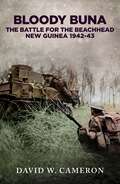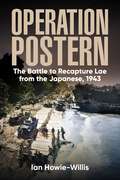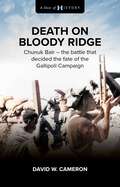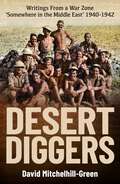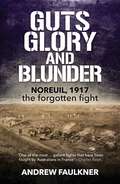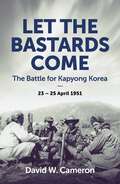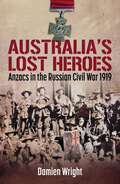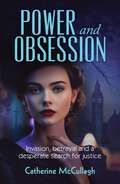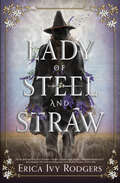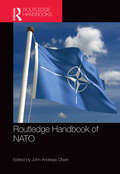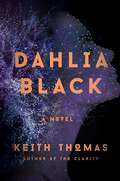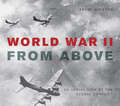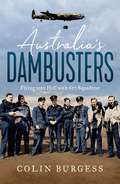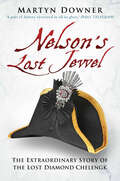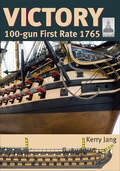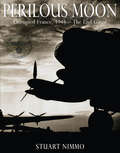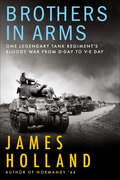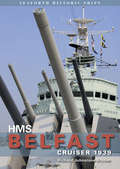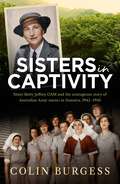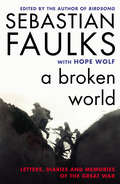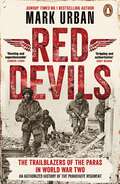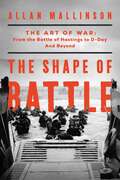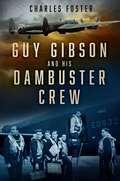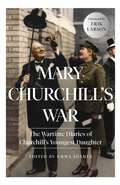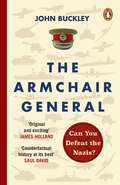- Table View
- List View
Bloody Buna: The Battle for the Beachhead New Guinea 1942
by David W. CameronWith the Australian troops crossing of the Kumusi River in mid-November, after pushing the Japanese back along the Kokoda Track, the time had come to face the entrenched Japanese at their beachhead at Gona, Sanananda and Buna. The end of the Kokoda Campaign in mid-November 1942 marked a turning point for the Australians, but the fighting was far from over. Within days, the battles for the three Japanese beachheads would commence. These battles where the first combined large-scale operation between Australian and American troops against the Japanese and would prove to be among the fiercest of the Pacific War. At Buna, the final battles to take 'New' and 'Old' air strips by the Australians, along with the ongoing American attacks to take the infamous 'Triangle,' proved to be a brutal and deadly bloodbath for all concerned. Amidst the crocodile-infested swamps and lowland jungle with dozens of Japanese bunkers and pillboxes with supporting artillery, the Australians who fought at all three beachheads faced an unprecedented toll, suffering more killed or wounded than in any other campaign of the Pacific war. In the face of relentless combat, the Allied forces at Buna suffered staggering casualties, with 2817 men lost at Buna. The American 32nd Division sustained 1954 casualties, including 353 killed (18%), 1508 wounded, and 93 missing amounting to around 40 per cent casualties over a six week period. The Australian 18th Infantry Brigade and supporting elements suffered 863 casualties, with 267 killed (31%), 557 wounded, and 39 missing amounting to around 60 per cent casualties over just three weeks of fighting. As the battle raged on, the Japanese suffered significant losses, with a minimum of 1390 men killed at Buna. The true number of their dead, lost in history, is likely much higher, with conservative estimates suggesting around 3000 fatalities. &“Bloody Buna" sheds light on the untold sacrifices and heroism displayed by the Australian and American troops as they clashed with the Japanese in one of the most vicious chapters of the Pacific War.
Operation Postern: The Battle to Recapture Lae from the Japanese, 1943
by Ian Howie-WillisJapanese troops seized and brutally occupied New Guinea&’s capital, Lae, for 18 months – until 16 September 1943. That day Australian soldiers retook the town against fierce resistance. Defeated, and after suffering huge losses, 8000 Japanese soldiers fled across the formidable 4000-metre mountains behind the town ; 2000 died on the nightmare trek.In a groundbreaking publication, independent professional historian Dr. Ian Howie-Willis unveils the untold story of 'Operation Postern' and its significant impact on the Pacific War. His latest book sheds light on the recapture of Lae, the capital of New Guinea, from Japanese forces on 16 September 1943. Through meticulous research, Dr. Howie-Willis brings to life the heroic efforts of Australian soldiers, the harrowing experiences of the Japanese retreat, and the often-overlooked plight of the Papua New Guinean village communities caught in the crossfire. Japanese troops had seized and ruthlessly occupied Lae for 18 months until the fateful day of the Australian soldiers' counteroffensive. Despite fierce resistance, the town was retaken, forcing the Japanese to retreat across treacherous 4000-meter mountains behind the area. Tragically, 2000 Japanese soldiers lost their lives during this nightmarish trek. Referred to as a turning point in the Pacific War, 'Operation Postern' shattered the Japanese belief that they could maintain control over the New Guinea mainland. Their continual retreat paved the way for subsequent successful Allied campaigns in the South-West Pacific theatre. However, victory came at a high cost, with over 2000 casualties within a fortnight for the Allies, while Japanese losses exceeded that number nearly fourfold. The exact toll on the Papua New Guinean village people remains unknown but undoubtedly significant. Dr. Howie-Willis challenges previous military histories that have marginalized the Papua New Guineans, highlighting their essential role as the "third party" to the conflict. By focusing on the village communities, he illuminates the horrific impact of the war on their lands and lives, offering a comprehensive and inclusive narrative. "Operation Postern" provides readers with an opportunity to revisit and reinterpret this crucial battle that shaped the course of history. Dr. Howie-Willis' extensive knowledge and meticulous attention to detail make this book a valuable contribution to the understanding of the Pacific War.
Death on Bloody Ridge: Chunuk Bair - the battle that decided the fate of the Gallipoli Campaign
by David W. CameronThe August Offensive or &‘Anzac Breakout&’ at Gallipoli was an attempt to break the stalemate of the campaign. It saw some of the bloodiest fighting since the landing as Commonwealth and Turkish troops fought desperate battles at Lone Pine, German Officers&’ Trench, Turkish Quinn&’s, The Chessboard, The Nek, The Farm, Hill Q, Chunuk Bair, and Hill 971. The offensive was designed to allow the allied forces to &‘break out&’ of the Anzac beachhead below the Sari Bair Range. The capture of Chunuk Bair by the New Zealanders resulted in some of the bloodiest fighting at Gallipoli and was key to the entire August offensive. While it was taken and held for a few days - it&’s recapture by the Turks on 10 August 1915 decided the fate of the Gallipoli Campaign. Within four months the Allies were forced to evacuate the peninsula, leaving it to the Turks - a decisive victory for the Ottoman Empire Death on Bloody Ridge: Chunuk Bair - the battle that decided the fate of the Gallipoli Campaign, focuses solely on this one decisive battle.
Desert Diggers: Writings From a War Zone 'Somewhere in the Middle East' 1940-1942
by David Mitchelhill-GreenDesert Diggers: Writings from a War Zone &‘Somewhere in the Middle East&’ 1940-1942 draws upon hundreds of soldiers&’ letters in a fresh and captivating narrative of the war in North Africa. Desert Diggers follows the first men to volunteer after the outbreak of war in 1939, tracing their adventures in exotic ports before further training in Palestine. A hunger for action grew: &‘Most of the chaps are ... anxious to get into anything that looks like a fight&’, one soldier wrote to his brother. From Egypt, &‘the hottest and dustiest place on God's earth&’ was the Diggers&’ next destination and their &‘blooding&’ in the battles for Bardia and Tobruk. After Rommel failed to storm Tobruk in April-May 1941, Nazi propaganda denigrated the garrison, &‘caught like rats in a trap&’. Amid frequent bombing and shelling, Berlin&’s scornful broadcasts were an unintended tonic. &‘Frequently we laughed and joked until the tears came into our eyes&’, a Digger quipped. From Tobruk, to the blunting of Rommel&’s attacks at El Alamein, the price of victory was palpably high: &‘some of my best mates didn't come out of it&’, lamented a corporal to his sister. Returning to Australia in 1943, some men maimed or traumatised, brought a further test for the Diggers ...Told in the words of the men who served, Desert Diggers offers a new personal perspective on the Western Desert campaign. With immediacy and raw emotion, these skillfully woven letters provide a remarkable and compelling account of the Australian experience of war.
Guts Glory and Blunder: Noreuil, 1917 – The Forgotten Fight
by Andrew FaulknerThis is a story of a forgotten battle. Other than in the haunted memories of those who fought there, and the families of those who died there, this battle is a footnote in the history books: a backwater off a side road at the end of a cul-de-sac on the battlefield tour trail. Guts Glory and Blunder reaches into the valley beneath the vaunted Hindenburg Line to draw out the men who fought and died seizing the French village of Noreuil in 1917. It finds hardened Anzacs and raw reinforcements fighting and dying shoulder-to-shoulder, step by bloody step, on the path to victory. Beginning on Gallipoli&’s fatal shore, Guts Glory and Blunder follows the Anzacs to the Somme trenches and the race to the Hindenburg Line. This is a story of the 50th Battalion&’s uncommon valour in its fiercest battle. How ordinary men performed superhuman feats despite a flawed plan, &‘friendly&’ fire, enemy atrocities – a POW massacre and human shield tactics – and a combat mutiny. How a larrikin private was awarded a Victoria Cross for one of the most audacious stunts in the history of the medal. Guts Glory and Blunder is a story of how the diggers prevailed against all odds.
Let the Bastards Come: The Battle for Kapyong Korea, 23 – 25 April 1951
by David W. CameronAnzac Day 2024 represents the 73rd anniversary of the critical battle of Kapyong (23 to 25 April 1951) This book for the first time tells the full story of the Australian, Canadian, New Zealand and American units involved. Fewer than 1,000 Australian and Canadian infantrymen, supported by New Zealand artillery and 15 American Sherman tanks fought off an entire Chinese Division of over 12,000 men and contributed significantly to defeating the great Chinese August offensive. The battle of Kapyong was fought during a heavy downpour in mountainous terrain, with Chinese units infiltrating the Australian lines which extended for seven kilometres. Given the small number of men involved and the long defensive line, several strong points were quickly established. The Australians almost alone, but with support from New Zealand gunners and some American tanks, for the first 24 hours held back the Chinese and were at times surrounded by large numbers of Chinese who launched ongoing human wave attacks against their isolated positions — but the line held with Australians leading bayonet counter charges against the Chinese. Within 24 hours, Canadian troops were committed to the battle and for 12 hours also faced significant attempts by the Chinese to surround their position – they too held their ground. The battle of Kapyong was truly a decisive battle of the Korean War, and for their heroic actions during the battle of Kapyong, the Australian and Canadian infantrymen and American tankers were awarded a rare US Presidential Unit citation.
Australia's Lost Heroes: Anzacs in the Russian Civil War 1919
by Damien WrightThis extraordinary book is both an engaging military history and an enthralling mystery. Australia&’s Lost Heroes tells the astonishing little-known story of the Australian soldiers who fought the Red Army in Russia in 1919 and the personal odyssey, 100 years later, to locate and identify the lost grave of Victoria Cross hero Sergeant Samuel Pearse VC MM.The Anzac volunteers fought an arduous campaign punctuated by fierce ambushes in thick forest, swamps and marshes and attacks on fortified bunkers. They also had to fight a war within, avoiding the treachery and mutiny of White Russian &‘allies&’. Remarkably, two Australians were awarded the Victoria Cross, one posthumously. Yet, unlike the reverence, recognition and commemoration afforded to WWI soldiers, not only do the deeds of Anzacs in Russia remain unrecognized, their graves lie lost and forgotten. Follow the author&’s journey to a remote corner of Russia with the grandson of Samuel Pearse in the hope of identifying the lost grave. Guided by a Russian battlefield archaeologist, they discover an astonishing clue which may resolve the mystery of an Australian hero missing for 100 years. An extraordinary story of national importance dedicated to those forgotten Australian heroes who fought and died in Russia after the Armistice.
Power and Obsession: Invasion, betrayal and a desperate search for justice
by Catherine McCullaghShe eyed him nervously, this man who could end her life without a second thought. She had been complacent, lulled into forgetting the immense power he wielded over her ...London, 1941, and in the battered capital of occupied Britain, Emilia Shaw works as a translator for ruthless SS General Oskar Voigt. But Emilia is also a resistance spy, desperate to avoid the scrutiny of Voigt&’s security chief, Irish policeman Brendan O&’Connor, and his brutal offsider, SS Colonel Hans Morser. Promised the crown, the Duke of Windsor returns to London, unleashing a wave of violence from the resistance. The Duke pressures the puppet government for his coronation, but finds himself at the mercy of Hitler, the supreme kingmaker. As the violence escalates, Emilia is hunted by both the SS and the resistance, caught in the crossfire as the country threatens to implode. Ultimately, its fate lies in the hands of one man — the most unlikely of them all.Power and Obsession is the vividly imagined tale of an occupied London, a dark labyrinth peopled by the sinister, the smug and the sadistic. Yet it is also a gripping tale of reckless audacity and the obsessive search for justice.
Lady of Steel and Straw
by Erica Ivy RodgersStar-crossed lovers grapple with forbidden attraction and a growing army of ghostly dead in this swashbuckling YA fantasy debut.After ten years of exile, following regicide in the House of Tristain, an alarming royal edict is delivered to the immortal scarecrow Guardians who once defended the crown: surrender themselves to the church of the Silent Gods, or stand accused of further treason. But with a puppet prince set to take the throne and vengeful wraiths appearing with alarming frequency, something foul and sinister is at work in the kingdom of Niveaux.Lady Charlotte Sand was born to calm the restless dead. A headstrong heroine, she refuses to relinquish her family&’s lavender Guardian to the Cardinal&’s Watch—a rash misstep that costs her brother his life and sets her on a path for revenge.For pious and handsome Captain Luc de Montaigne, it&’s an excruciating predicament. His long-lost, childhood love has triggered a faction war that could tear the realm asunder. Now Charlotte and Luc must choose between killing one another and stepping closer to victory—or yielding to the electricity between them.Heartily inspired by The Three Musketeers, this multiple-perspective narrative features a unique system of bone and herbal magic, sultry banter, and a feisty cast of well-rounded supporting characters. This rousing first entry in the Waking Hearts fantasy duology is a gorgeous read and an excellent pick for fans of Rin Chupeco and Margaret Rogerson.
Routledge Handbook of NATO
by John Andreas OlsenThis handbook provides a comprehensive survey of the development and importance of the North Atlantic Treaty Organisation (NATO), its role in international relations and its influence on history.The volume examines the Alliance’s evolution in breadth, depth and context by analysing and explaining why and how NATO has endured and remained relevant since its creation. To present an inclusive study of the Alliance’s activities and milestone events and to offer a glimpse of future challenges, the book’s 29 chapters fall into six thematic sections that act as frameworks and allow the exploration of specific topics that pertain to the evolution of NATO: Part I: History of NATO, 1949–2024 Part II: Key Enduring Themes, 1949–2024 Part III: Military Operations, 1995–2024 Part IV: National Perspectives, 1949–2024 Part V: Regional Perspectives, 1949–2024 Part VI: Future Prospects, 2024– This handbook will be of much interest to students and researchers of NATO, strategic studies, defence studies and International Relations, as well as for staff and fellows at security- and defence-oriented think tanks and government officials, military personnel and other practitioners in the areas of foreign affairs and defence.
Dahlia Black
by Keith ThomasFor fans of World War Z and the Southern Reach Trilogy, a suspenseful oral history commemorating the five-year anniversary of the Pulse—the alien code that hacked the DNA of Earth’s population—and the response team who faced the world-changing phenomenon. <p><p>Voyager 1 was a message in a bottle. Our way of letting the galaxy know we existed. That we were out here if anyone wanted to find us. Over the next forty years, the probe flew past Jupiter and Saturn before it drifted into the void, swallowed up by a silent universe. Or so we thought… <p><p>Truth is, our message didn’t go unheard. Discovered by Dr. Dahlia Black, the mysterious Pulse was sent by a highly intelligent intergalactic species that called themselves the Ascendants. It soon becomes clear this alien race isn’t just interested in communication—they are capable of rewriting human DNA, in an astonishing process they call the Elevation. <p><p>Five years after the Pulse, acclaimed journalist Keith Thomas sets out to make sense of the event that altered the world. Thomas travels across the country to interview members of the task force who grappled to decode the Pulse and later disseminated its exact nature to worried citizens. He interviews the astronomers who initially doubted Black’s discovery of the Pulse—an error that critics say led to the world’s quick demise. Thomas also hears from witnesses of the Elevation and people whose loved ones vanished in the Finality, an event that, to this day, continues to puzzle Pulse researchers, even though theories abound about the Ascendants’ motivation. <p><p>Including never-before-published transcripts from task force meetings, diary entries from Black, and candid interviews with Ballard, Thomas also shows in Dahlia Black how a select few led their country in its darkest hours, toward a new level of humanity.
World War II From Above: An Aerial View of the Global Conflict
by Jeremy HarwoodIn World War II From Above, historian Jeremy Harwood profiles the fascinating story, unknown to many, of the battle waged by Allied and Axis spies in the skies to obtain accurate aerial intelligence during World War II. Harwood features dozens of eye-catching aerial reconnaissance photographs drawn from the archives compiled by all the major fighting powers. His accompanying text profiles the daring pilots who risked death to shoot these photographs and the photographic interpreters who pioneered a totally new science to reveal the secrets they contained. Inspiring, informative, and entertaining special features focus on particularly crucial operations from both the Allied and Axis perspectives—from the American Doolittle Raid against Japan to the numerous Allied battles against Germany’s cutting-edge U-boats to the Battle of Monte Cassino and a score of other epic campaigns. Told through photographs that have largely never before appeared in print outside of their reconnaissance origins, World War II From Above combines history with photography, placing the reader in the midst of the action like few books ever have.
Australia's Dambusters: Flying into Hell with 617 Squadron
by Colin BurgessThe story of 617 Squadron RAF, which carried out one of the most dangerous and audacious aerial bombing raids of World War II It was the evening of 16 M ay 1943 Nineteen modified Lancaster bombers from 617 Squadron RAF, under the command of youthful W ing Commander Guy Gibson, roared into the night sky from their Lincolnshire base. They were on a top-secret Bomber Command mission, codenamed Operation Chastise, now regarded as one of the most dangerous and audacious bombing raids of World War II – an attack on the formidable, well-defended dams of G ermany&’s Ruhr Valley. Slung beneath the belly of each aircraft was one of the war&’s greatest secrets – a bouncing bomb. Against the odds, and flying straight and level into the teeth of terrifying enemy f ire, they succeeded in breaching the two principal dams. Many of the 133 airmen involved that fateful night hailed from Australia, and several would be counted among the 56 who would not return to base next morning. The Dams Raid led to the men of this gallant company – often referred to as a suicide squadron – taking on even more hazardous operations in the final two years of the war. Under valorous leadership, and now armed with massive Tallboy and Grand Slam &‘earthquake&’ bombs, they obliterated vital Nazi installations, destroying such defiant targets as the heavily defended K embs Barrage and the German battleship Tirpitz, often at a terrible cost in lives. First published in 2003, this deeply researched, revised and updated edition of Australia&’s Dambusters offers a truly comprehensive account of the most famous bombing raid of the war through the words and stories of the courageous Australian airmen and others who flew on this and later perilous missions, remembered and forever immortalised as the Dambusters.
Nelson's Lost Jewel: The Extraordinary Story of the Lost Diamond Chelengk
by Martyn DownerAdmiral Lord Nelson’s diamond Chelengk is one of the most famous and iconic jewels in British history. Presented to Nelson by the Sultan Selim III of Turkey after the Battle of the Nile in 1798, the jewel had thirteen diamond rays to represent the French ships captured or destroyed at the action. A central diamond star on the jewel was powered by clockwork to rotate in wear. Nelson wore the Chelengk on his hat like a turban jewel, sparking a fashion craze for similar jewels in England. The jewel became his trademark to be endlessly copied in portraits and busts to this day.After Trafalgar, the Chelengk was inherited by Nelson’s family and worn at the Court of Queen Victoria. Sold at auction in 1895 it eventually found its way to the newly opened National Maritime Museum in Greenwich where it was a star exhibit. In 1951 the jewel was stolen in a daring raid by an infamous cat-burglar and lost forever.For the first time, Martyn Downer tells the extraordinary true story of the Chelengk: from its gift to Nelson by the Sultan of Turkey to its tragic post-war theft, charting the jewel’s journey through history and forging sparkling new and intimate portraits of Nelson, of his friends and rivals, and of the woman he loved.
Victory: 100-gun First Rate 1765 (ShipCraft #29)
by Kerry JangThe ‘ShipCraft’ series provides in-depth information about building and modifying model kits of famous warships. Previously, these have generally covered plastic and resin models of 20th century subjects, but this volume is a radical departure – not only a period sailing ship but one for which kits are available in many different materials and scales. This requires some changes to the standard approach, but the main features of the series remain constant. Victory, Nelson’s flagship at Trafalgar, is probably the world’s most famous sailing warship, and survives in restored form at Portsmouth. With lavish illustration, this book takes the modeller through a brief history of the ship, highlighting differences in appearance over her long career. Detailed color profiles reveal decorative detail and changes to paint schemes over 250 years, and outline some of the debatable features experts still disagree about. The modelling section reviews the strengths and weaknesses of available kits, lists commercial accessory sets for super-detailing, and provides hints on modifying and improving the basic kit, including the complexities of rigging. This is followed by an extensive photographic gallery of selected high-quality models in a variety of scales, and coverage concludes with a section on research references – books, monographs, large-scale plans and relevant websites. Following the pattern of the series, this book provides an unparalleled level of visual information – paint schemes, models, line drawings and photographs – and is simply the best reference for anyone setting out to model this imposing three-decker.
Perilous Moon: Occupied France, 1944—The End Game
by Stuart Nimmo&“A volume that&’s not quite like anything else: the story of [the author&’s] father and the Nazi air ace who shot him out of the sky over Occupied France&” (Open Letters Monthly). Perilous Moon is a lavishly illustrated book that observes Occupied France during World War II through the eyes of British bomber pilot Neil Nimmo and newly discovered period photographs. Shot down by Luftwaffe night fighter pilot Helmut Bergmann, Nimmo and his crew were the German&’s sixth of seven victims in forty-six minutes. With seven wrecked Lancasters and thirty-eight Allied airmen killed, Bergmann had singlehandedly turned what should have been a relatively simple RAF raid into a life-long nightmare. With barely time to parachute from Q-Queenie, his stricken Lancaster, Neil Nimmo&’s unholy adventure had only just begun. Unusually, Perilous Moon follows both pilots, Nimmo and Bergmann, through the war after that April night, and continues to observe them as the Occupation of France comes to a sticky end. In the late 1980s, Neil Nimmo passed awat, but in Perilous Moon, his son Stuart Nimmo, a Paris-based documentary maker, closely chronicles the period with over two hundred original, previously hidden photographs. This unusual, fascinating book cuts through the fog that shrouded the Occupation and which continued to linger for decades to come. &“A masterwork of rare images and gripping narrative.&” —Mort Rosenbloom, former editor of The International Herald Tribune &“The detail in the book, including scores of photos and maps, is remarkable.&” —The Huffington Post &“A special volume among the many about the war.&” —The Columbus Dispatch
Brothers in Arms: One Legendary Tank Regiment's Bloody War from D-Day to V-E Day
by James HollandThe renowned historian and author of Normandy &’44 recounts the operations and personal experiences of the legendary Sherwood Rangers during WWII. One of the last cavalry units to ride horses into battle, the Sherwood Rangers were transformed into a &“mechanized cavalry&” of tanks in 1942. After winning acclaim in the North African campaign, they spearheaded one of the D-Day landings in Normandy and became the first British troops to cross into Germany. Their courage, skill and tenacity contributed mightily to the surrender of Germany in 1945. Inspired by Stephen Ambrose&’s Band of Brothers, historian James Holland profiles this extraordinary group of citizen soldiers. Informed by never-before-seen documents, letters, photographs, and other artifacts from Sherwood Rangers&’ families, Holland offers a uniquely intimate portrait of the war at ground level. Brothers in Arms introduces heroes such as Commanding Officer Stanley Christopherson, squadron commander John Semken, Sergeant George Dring, and others who helped their regiment earn the most battle honors of any in British army history. Weaving their exploits into the larger narrative of D-Day to V-E Day, Holland offers fresh analysis and perspective on the endgame of WWII in Europe.
HMS Belfast: Cruiser 1939 (Seaforth Historic Ships)
by Richard Johnstone-BrydenHMS Belfast, originally a Royal Navy light cruiser, is now permanently moored on the Thames in London. One of ten Town-class cruisers she saw service on the icy Arctic convoys during the Second World War and was also present for the bombardment of the D-Day beaches in 1944. Later, she saw service during the Korean War.As is the case for many historic ships, however, there is a surprising shortage of informative and well illustrated guides, for reference during a visit or for research by enthusiasts—ship modellers, naval buffs, historians or students. This new series redresses the gap. Written by experts and containing more than 200 specially commissioned photographs, each title takes the reader on a superbly illustrated tour of the ship, from bow to stern and deck by deck. Significant parts of the vessel for example, the gun turrets and engine rooms are given detailed coverage both in words and pictures, so that the reader has at hand the most complete visual record and explanation of the ship that exists. In addition, the importance of the ship, both in her own time and now as a museum vessel, is explained, while her design and build, and her career prior to exhibition are all described.No other books offer such superb visual impact and detailed information as the Seaforth Historic Ship Series a truly groundbreaking concept bringing the ships of our past vividly to life.As seen in Discover Britain Magazine.
Sisters in Captivity: Sister Betty Jeffrey OAM and the courageous story of Australian Army nurses in Sumatra, 1942–1945
by Colin BurgessThe incredible account of Sister Betty Jeffrey OAM and the Australian war nurses who survived the bombing of evacuation ship SS Vyner Brooke in February 1942, and subsequently spent three years in Japanese prison camps in Sumatra. During those perilous years surviving in squalid conditions, Sister Jeffrey kept a secret diary of day-to-day events which, after the war, was turned into a hugely successful book and radio serial: White Coolies. She would often write of the powerful sisterhood that evolved as the prisoners of war took strength from each other, even forming a vocal orchestra. White Coolies was a major inspiration for the 1997 film Paradise Road.Sisters in Captivity builds on those diaries to not only re-live the years the nurses spent as POWs but also recounts the early life and influences that encouraged Betty Jeffrey into the field of nursing as a lifelong endeavour. A tireless advocate for returned nurses, she co-founded the Australian Nurses Memorial Centre with sole survivor of the Banka Island Massacre, fellow POW, and her longtime friend Vivian Bullwinkel. Featuring 32 pages of photos including personal mementos of Betty Jeffrey, courtesy of her family, and her drawings from the prison camps, this is a powerful account of women&’s resilience amidst the devastating brutality of war.
A Broken World: Letters, Diaries and Memories of the Great War
by Sebastian Faulks with Hope WolfA lieutenant writes of digging through bodies that have the consistency of Camembert cheese; a mother sends flower seeds to her son at the Front, hoping that one day someone may see them grow; a nurse tends a man back to health knowing he will be court-martialled and shot as soon as he is fit. Edited by the bestselling author of Birdsong and Dr Hope Wolf, this is an original and illuminating non-fiction anthology of writing on the First World War.Diaries, letters and memories, testaments from ordinary people whose lives were transformed, are set alongside extracts from names that have become synonymous with the war, such as Siegfried Sassoon and T.E. Lawrence. A Broken World is an original collection of personal and defining moments that offer an unprecedented insight into the Great War as it was experienced and as it was remembered.
Red Devils: The Trailblazers of the Parachute Regiment in World War Two: An Authorized History
by Mark UrbanA GRIPPING, AUTHORISED HISTORY OF THE DARING 'RED DEVILS' TOLD THROUGH THE FATES OF SIX HEROES.'Riveting . . . Full of daring action, standout characters and cutting edge operations, this is unputdownable' Damien Lewis'Gripping and authoritative. Family men, circus performers, solicitors, communists, and reactionaries all fought together and shed blood for their country - a true and moving story of war' Andy McNab------------------------------------Their German enemies called them the 'Red Devils'. Montgomery described them as 'men apart - every man an Emperor'. The cards they received on qualifying began: 'You are the elite of the British army'.The Parachute Regiment.In this gripping, authorized account, bestselling historian Mark Urban tells the story of the wartime creation and development of Britain's elite airborne infantry - who ranged from circus performers to solicitors, policemen to gravediggers, Christians and Jews to communists.Through the fates of six men - including recently widowed Geoffrey Pine-Coffin, who had to leave his little boy at home to head to the front, and Mike Lewis, whose photographs became iconic images of war - Urban vividly shows what it took to succeed in this new regiment. All six men would shed blood for their country in daring actions at D-Day, Arnhem and across the Second World War; two would not survive, and one would face disgrace.Based on deep archival research, British and German sources and new material from the men's families, and giving overdue recognition to the North African campaign, Urban's unvarnished history is a compelling and moving depiction of the highs and lows of battle.
The Shape of Battle: The Art of War from the Battle of Hastings to D-Day and Beyond
by Allan MallinsonA distinguished military historian tells the dramatic story of six defining battles in world history.Every battle is different. Each takes place in a different context—the war, the campaign, the weapons. However, battles across the centuries, whether fought with spears and swords or advanced technology, have much in common. Fighting is, after all, an intensely human affair; human nature doesn't change. So why were certain battles fought as they were? What gave them their shape? Why did they go as they did: victory for one side, defeat for the other? In exploring six significant feats of arms—the war and campaign in which they each occurred, and the factors that determined their precise form and course—The Shape of Battle answers these fundamental questions about the waging of war. Eschewing polemics, The Shape of Battle doesn't try to argue a case. It lets the narratives—the battles—speak for themselves.
Guy Gibson and his Dambuster Crew
by Charles FosterThe Dams Raid is the RAF’s most famous bombing operation of the Second World War, and Guy Gibson, who was in command, its most famous bomber pilot. Of the six men who made up his crew — two Canadians, an Australian and three Englishmen – only one had previously flown with him, but altogether they had amassed more than 180 operations. Drawing on rare and unpublished sources and family archives, this new study, written by the author of the acclaimed 2018 title, The Complete Dambusters, is the first book to fully detail their stories. It explores the previous connections between the seven men who would fly on just one operation together and examines how their relationships developed in the few months they spent in each other’s company.
Mary Churchill's War: The Wartime Diaries of Churchill's Youngest Daughter
by Mary ChurchillA unique and evocative portrait of World War II—and a charming coming-of-age story—from the private diaries of Winston Churchill's youngest daughter, Mary.&“I am not a great or important personage, but this will be the diary of an ordinary person's life in war time. Though I may never live to read it again, perhaps it may not prove altogether uninteresting as a record of my life.&” In 1939, seventeen-year-old Mary found herself in an extraordinary position at an extraordinary time: it was the outbreak of World War II and her father, Winston Churchill, had been appointed First Lord of the Admiralty; within months he would become prime minister. The young Mary Churchill was uniquely placed to observe this remarkable historical moment, and her diaries—most of which have never been published until now—provide an immediate view of the great events of the war, as well as exchanges and intimate moments with her father. But these diaries also capture what it was like to be a young woman during wartime. An impulsive and spirited writer, full of coming-of-age self-consciousness and joie de vivre, Mary's diaries are untrammeled by self-censorship or nostalgia. From aid raid sirens at 10 Downing Street to seeing action with the women&’s branch of the British Army, from cocktail parties with presidents and royals to accompanying her father on key diplomatic trips, Mary's wartime diaries are full of color, rich in historical insight, and a charming and intimate portrait of life alongside Winston Churchill during a key moment of the twentieth century.
The Armchair General: Can You Defeat the Nazis? (The Armchair General #1)
by John BuckleyA ground-breaking approach to history where YOU choose the fate of WWII - perfect for readers of Bletchley Park Brainteasers and The GCHQ Puzzle Book.''An original and exciting approach . . . Buckley is one of our very finest historians.' JAMES HOLLAND________________________TAKE THE HOTSEATAssume the role of real Generals, Leaders, Soldiers and Intelligence Officers in the Allied Forces during WWII, including Winston Churchill and President Eisenhower.EXAMINE THE INTELLIGENCEExplore eight key moments of the war with real contemporaneous intelligence: Britain's Darkest Hour, 1940; The War in North Africa; Stalin's War on the Eastern Front; The Pacific Battle of Midway; The Dresden Bomber Offensive; Casablanca; Arnhem and Operation Market Garden; The Bomb and Hiroshima.CONSIDER THE SCENARIO & MAKE YOUR DECISIONFrom battlefields to war cabinets, each tactical and strategic decision you make leads to a different outcome.Will you follow the path of the past - or shape a new history?________________________'Wonderfully original . . . putting readers at the heart of the decision-making process and allowing them, literally, to change the course of history. This is counterfactual history at its best.' SAUL DAVID'A reminder that history is a never ending now, a relentless and endless present that comes without the luxury of hindsight.' AL MURRAY'An original and exciting approach . . . Buckley is one of our very finest historians. The Armchair General adds enormously to our understanding of the conflicts.' JAMES HOLLAND'A unique, enjoyable approach to evaluating military decision-making.' HISTORY OF WAR
